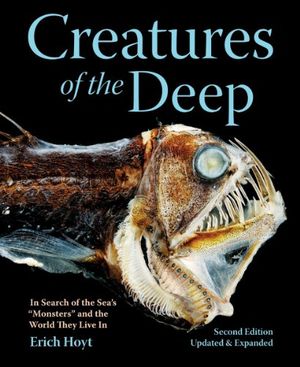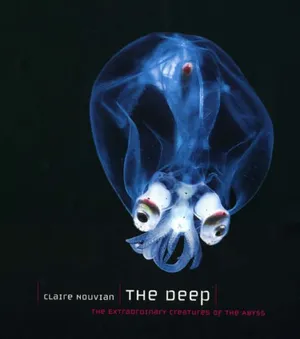The Scariest Monsters of the Deep Sea
We took the spook-tacular celebration to the depths of the ocean, where some of the craziest—and scariest—looking creatures lurk in the dark
/https://tf-cmsv2-smithsonianmag-media.s3.amazonaws.com/filer/c8/45/c845e0b4-24e6-4eec-9b5a-e28ddb11dc46/scariest-deep-sea-monsters.jpg)
Red Octopus (Stauroteuthis syrtensis)
/https://tf-cmsv2-smithsonianmag-media.s3.amazonaws.com/filer/Scariest-Sea-Monsters-Red-Octopus-631.jpg)
Deep sea blob sculpin (Psychrolutes phrictus)
/https://tf-cmsv2-smithsonianmag-media.s3.amazonaws.com/filer/Scariest-Sea-Monsters-Blob-631.jpg)
Remember the horror movie, The Blob? This sculpin bears some resemblance to the invading alien. These fish are usually found at depths of up to 2,800 meters along the U.S. West coast and can get caught in nets that indiscriminately trawl the seafloor for commercially important species like crabs.
Sea Pigs (genus Scotoplanes)
/https://tf-cmsv2-smithsonianmag-media.s3.amazonaws.com/filer/Scariest-Sea-Monsters-Sea-Pig-631.jpg)
The Goblin Shark (Mitsukurina owstoni)
/https://tf-cmsv2-smithsonianmag-media.s3.amazonaws.com/filer/Scariest-Sea-Monsters-Goblin-Shark-631.jpg)
The Proboscis Worm (Parborlasia corrugatus)
/https://tf-cmsv2-smithsonianmag-media.s3.amazonaws.com/filer/Scariest-Sea-Monsters-Proboscis-Worm-631.jpg)
Zombie Worms (Osedax roseus)
/https://tf-cmsv2-smithsonianmag-media.s3.amazonaws.com/filer/Scariest-Sea-Monsters-Zombie-Worms-631.jpg)
Stonefish (Synanceia verrucosa)
/https://tf-cmsv2-smithsonianmag-media.s3.amazonaws.com/filer/Scariest-Sea-Monsters-Stonefish-631.jpg)
The Sloane’s viperfish (Chauliodus sloani)
/https://tf-cmsv2-smithsonianmag-media.s3.amazonaws.com/filer/Scariest-Sea-Monsters-Viperfish-631.jpg)
Giant isopods (Bathynomus giganteus)
/https://tf-cmsv2-smithsonianmag-media.s3.amazonaws.com/filer/Scariest-Sea-Monsters-Giant-Isopod-631.jpg)
Frilled Shark (Chlamydoselachus anguineus)
/https://tf-cmsv2-smithsonianmag-media.s3.amazonaws.com/filer/Scariest-Sea-Monsters-Frilled-Shark-631.jpg)
Related Books

Creatures of the Deep: In Search of the Sea's Monsters and the World They Live In
